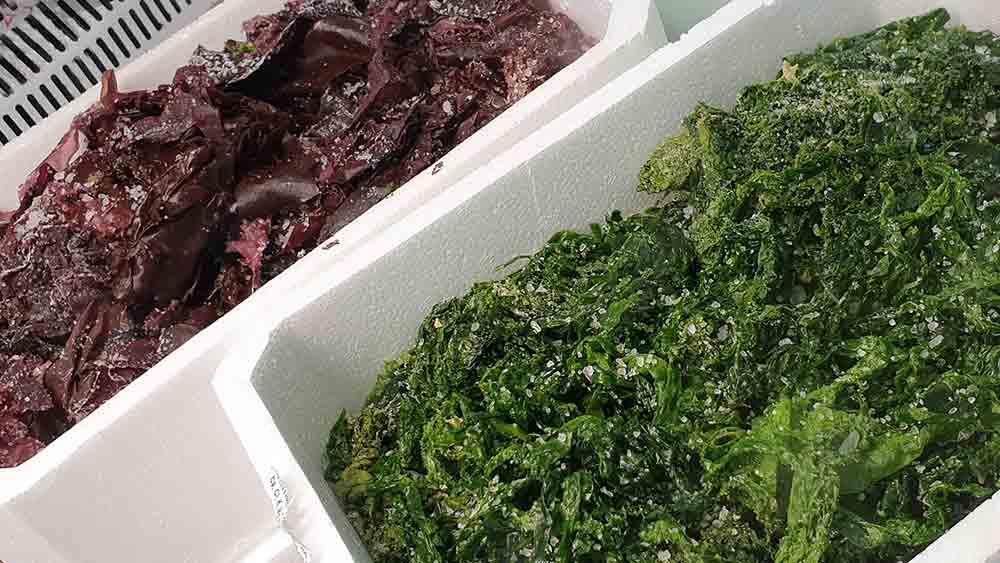In the UK seaweed has often been overlooked as tasty culinary ingredient. This means we have been missing, out as it is tasty and very easy to cook with. Particularly as an excellent accompaniment to seafood dishes. They have attractive colours and subtle flavours; in the same as as oysters or shellfish, they deliver a taste of the ocean. They also have quite earthy aromas similar sorrel or mushrooms. We have several different types to choose from on our counter.
Organic Seaweed From Brittany
We source our selection from Brittany in France which is considered to have largest seaweed field in Europe. Production of seaweed is mainly concentrated in a variety of marine parks that are protected zones which provide excellent quality waters. This allows the seaweed to have the organic certification.
Seaweed does not have roots, but attaches itself onto rocks. The plant draws its nutrients directly from the sea water and is known for concentrating trace elements such iodine, vitamins and mineral salts, which makes it a really nutritious addition to our diets.
It is collected by hand on the intertidal zone at low tide, preferably when it is still immersed in sea water. Once collected, the seaweed is washed to remove it of any residue of sand and seashells. Many of the species harvested for commercial sale are also grown on chains or lagoons to ensure suitable quantities are available.
The clean seaweed is then packed in sea salt for preservation – you can see the large crystals in the counter displays. It has a long shelf life and can also be frozen. These edible seaweeds do have long but distinct seasons for harvesting so there a few months in the year when certain species are not available.
Red And Green Varieties
Typically you will find a couple of varieties on our counter. Dulse is the dark red species. It is quite thin and translucent with a full-bodied taste it goes very well with shellfish and seafood. It is also served in the form of flakes or crisps. Boxes of the emerald green variety are Sea Lettuce with its name derived from the large leaves and bright colour. It tastes similar to sorrel.
Seaweed Cooking Tips
To prepare first rinse well to remove the preserving salt and any sand particles. Then soak in cold water fro about 3 minutes. Its weight will increase by 150%!
You can use it raw to complement marinaded fish, use in fish soups or as a tasty garnish. To cook plunge the plumped seaweed into boiling water until tender – this will be about six to twelve minutes. Alternatively you can sautee gently in olive oil.
Sea lettuce particularly benefit from quick, gentle cooking techniques, or can also be eaten raw. Due to its sheet-like structure, can also be used to wrap fish for cooking adding extra ocean flavour.
You can check our fish recipes here >>
You can find out more on edible seaweeds here >>






